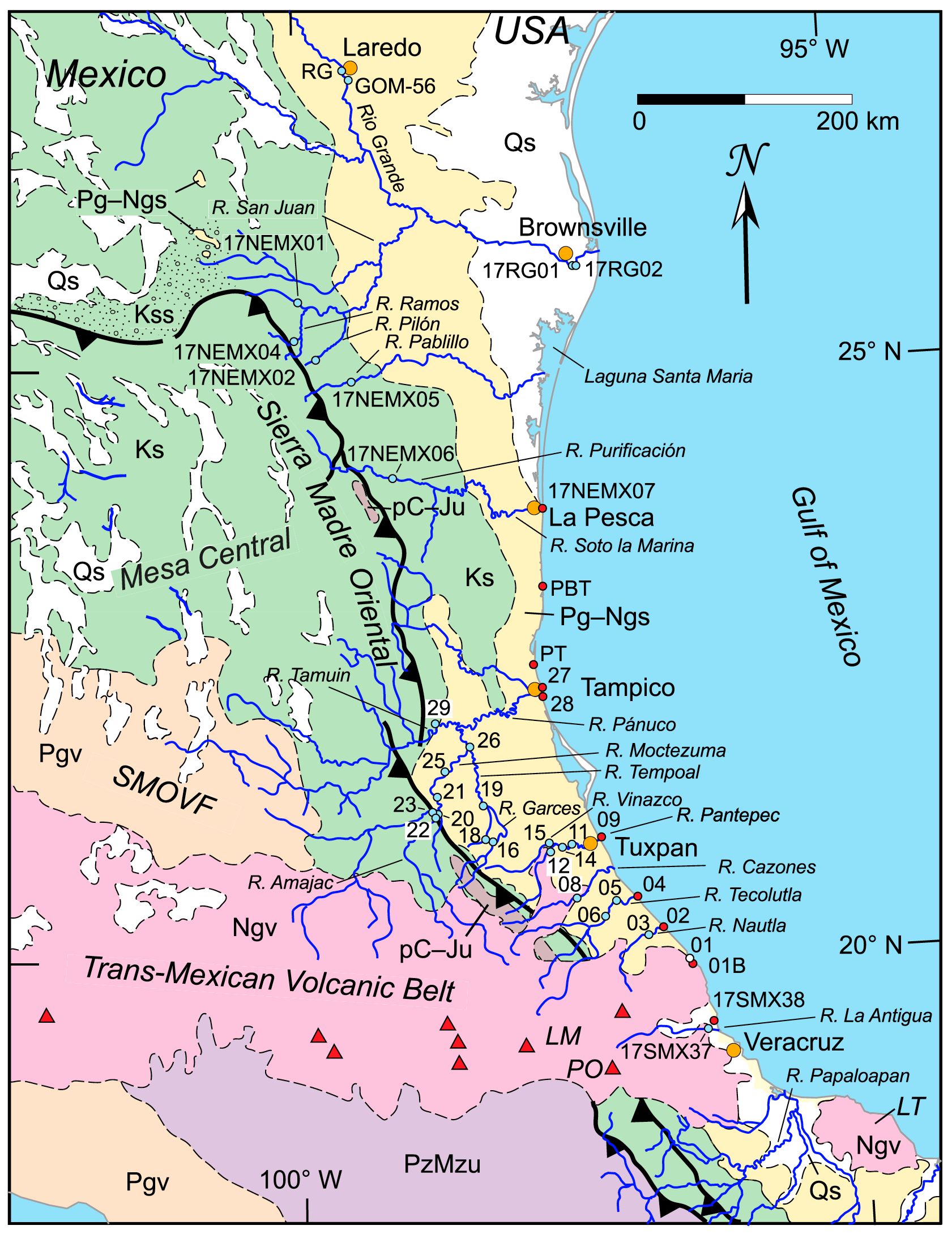Modern Sand Provenance and Transport across the Western Gulf of Mexico Margin
Timothy F. Lawton, Edgar Juárez-Arriaga, Daniel F. Stockli, and Andrea Fildani
Geological Society of America Bulletin, 2023, https://doi.org/10.1130/B37002.1
Study Summary

Compositional study of modern sand samples combined with geochronological analysis of detrital zircon grains in the same samples from beaches of eastern Mexico and major rivers of northeastern Mexico draining to the Gulf of Mexico provide evidence for a minimum of 650 km of coast-parallel sand transport southward, from the mouth of the Rio Grande at the Mexico–U.S. border to the central part of the state of Veracruz, Mexico (sample sites indicated by colored circles in figure). Two principal tracers of Rio Grande sand are identified: (1) quartz-rich composition that contrasts with the sand of eastern Mexico rivers containing abundant volcanic rock fragments and (2) detrital zircon grains with Precambrian ages in the ranges of 1.8–1.5 billion or 1.4 billion years old, age groups that are typical of the geologic basement of the southwest United States but are uncommon or rare in rocks exposed in Mexican river drainage basins. A gradual decrease in sand ultimately derived from the southern Rocky Mountains of the United States with distance southward along the coast from the mouth of the Rio Grande, combined with an absence of young (20 million to less than 1 million years old) zircon grains in beaches north of rivers draining the active Trans-Mexican volcanic belt of central Mexico indicate net coast-parallel sand transport southward along the eastern coast of Mexico. This observation demonstrates that wintertime shoreline-parallel surface currents rather than north-directed summertime currents dominate sediment transfer. Furthermore, sand samples of Tamaulipas beaches in northeastern Mexico commonly have equal or higher proportions of U.S.-derived grains than are present in sand bars of the lower Rio Grande and the Rio Grande delta, and thus indicate that alongshore processes rework and incorporate coastal dune and beach sands of northeastern Mexico that were deposited prior to construction of dams in the Rio Grande drainage basin. Implied coastal erosion may be related to postglacial sea level rise or interruption of sediment supply to the coastal sediment transport system by dams in the Rio Grande drainage basin.
Why is this research important and why do the results matter?
- Knowledge of sediment compositional trends can augment oceanographic data regarding sediment transport direction.
- Alongshore changes in sediment composition can predict stability of the critical coastal environment.